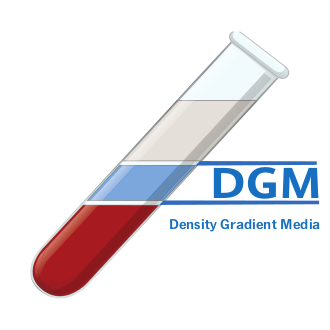
Density Gradient Media
Excellence in Separations
- Lymphoprep
- Lymphoprep Tube
- OptiPrep
- Polymorphprep
- Nycodenz
- Polysucrose 400
Nycodenz
A universal density gradient medium
It was originally developed as an X-ray contrast medium and have therefore been subjected to rigorous clinical testing.
- non-ionic, non-toxic to cells and metabolically inert
- can be used for the isolation of cells, subcellular organelles and membranes, macromolecules and viruses
- forms true solutions. It is therefore easy to remove the medium from the cells after fractionation
- is resistant to bacterial degradation
- solutions can be autoclaved
Nycodenz is the trademark name for iohexol, whose systematic name is 5-(N-2,3-dihydroxypropylacetamido)-2,4,6-tri-iodo-N-N’-bis(2,3-dihydroxypropyl)isophthalamide. It has a molecular weight of 821 g/mol. The chemical properties stability of Nycodenz are related to its structure.

Gradients of Nycodenz can be generated by:
- Centrifugation in situ (self-forming gradients).
- Diffusion. Using Nycodenz, linear gradients can be simply prepared within 45 minutes.
- Freezing and thawing.
- Tilted tube rotation (Gradient Master™).

The density of Nycodenz in solution can be determined by measuring the refractive index. The density can also be determined spectrophotometrically.
Nycodenz is a non-particulate medium therefore the distribution of cells in gradients can be determined using a haemocytometer, electronic particle counter or by light scattering measurements using a spectrophotometer.
Nycodenz does not interfere with the orcinol and diphenylamine reactions for the estimation of nucleic acids nor with the very sensitive dye binding assays for protein and DNA.
Polysaccharides and sugars can be determined in the presence of Nycodenz using the phenol/H2SO4 assay. Fluorimetric assays of nucleic acids and proteins can also be carried out in the presence of Nycodenz. Nycodenz does not interfere with most assays for the marker enzymes of subcellular components, also commercial scintillants are compatible with Nycodenz.
Nycodenz can be removed from samples by dialysis, ultrafiltration or gel filtration. Cells, subcellular organelles and other particulate matter can be isolated from Nycodenz by centrifugation without the risk of contaminating the pellet with Nycodenz.

a powder in the following package size:
| Prod. No. 18003 | 1 x 500 g |
Applications
isolation of:
- Mammalian and non-mammalian cells
- Subcellular organelles
- Organelles from non-mammalian sources
- Subcellular membranes
- Protein and protein complexes
- Ribonucleoproteins
- Viruses
